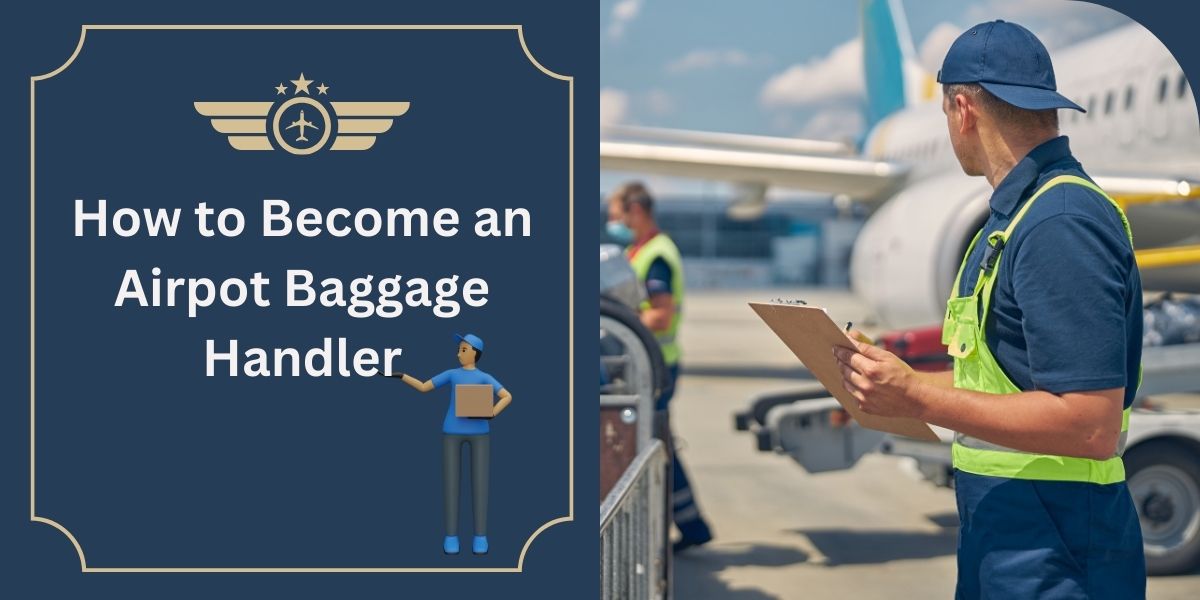Working in the role of a baggage handler can mean different kinds of duties based on the company or airport you work for. A baggage handler is a person who loads and unloads baggage on an aircraft.
The person in this role can also load and unload other types of cargo, including mail, airfreight, and packages. They may work most of the time outdoors when loading planes or within baggage handling centers inside the airport.
In this article, we will discuss how to become an airport baggage handler, its responsibilities, requirements, and salary.
Who is a baggage handler?
A baggage handler is a person who loads and unloads baggage on an aircraft. As a baggage handler, you work at the airport, loading and unloading luggage and cargo from aircraft.
Your primary responsibilities are to get luggage onto departing flights and off of arriving flights.
Your job involves operating conveyor belts and luggage carousels, driving tugs and tow tractors between the concourse and the airport’s baggage claim area, and lifting heavy, large, oversized baggage that can weigh over 50 pounds.
If you work as a ramp agent, baggage handling is an aspect of your job. Other job duties of a ramp agent include deicing airplanes, guiding aircraft, and servicing aircraft.
How to Become a Baggage Handler
To become a baggage handler, you must be at least 18 years old and have a high school diploma or GED certificate. Additional qualifications include having a valid driver’s license and passing a physical test.
You must be able to drive a tow tractor, lift heavy luggage, and handle other physical activities such as bending, crawling, kneeling, and squatting.
To have a successful career as a baggage handler, you need strong teamwork and communication skills, as you are part of an airline’s service team with other baggage handlers, ramp agents, and supervisors. You can find baggage handler jobs with any airline.
Duties and Responsibilities of Baggage Handlers?
The duties and responsibilities of an airport baggage handler include:
- Load and unload luggage and other items from the baggage carousel
- Tag, weigh, and scan luggage and other items
- Transport luggage and items to the designated locations
- Assist passengers with their belongings and answer inquiries
- Maintain the cleanliness and organization of the baggage area
- Follow safety regulations and procedures
What are the requirements to become a baggage handler?
Here are the requirements and qualifications to become an airport baggage handler
- High school diploma or equivalent
- Previous experience in a similar role preferred
- Excellent customer service skills
- Physically able to lift and carry heavy items
- I am able to work in a fast-paced environment
- Strong organizational skills
- I am able to work independently and as part of a team
What is the salary of a baggage handler?
As of January 13, 2024, the average hourly pay for a baggage handler in the United States is $18.47 an hour.
While ZipRecruiter is seeing hourly wages as high as $23.32 and as low as $11.06, the majority of baggage Handler’s wages currently range between $14.42 (25th percentile) and $21.15 (75th percentile) across the United States.
The average pay range for baggage handlers varies greatly (by as much as $6.73), which suggests there may be many opportunities for advancement and increased pay based on skill level, location, and years of experience.
What is the work schedule of an airport baggage handler?
Working as a baggage handler requires you to be flexible and adapt easily to irregular hours and last-minute schedule updates.
Most positions require shift work and you need to be on call whether it is day, evening, night, or weekend, depending on the assigned shift.
If you are lucky and become part of a union, you will work shifts ranging from 8 to 11 hours long in a compressed workweek period. Thus, you would be working three days and then taking another three days off or something similar.
Much of the work requires being outdoors in all types of weather, and you will be moving between buildings around an airport, warehouses, aircraft holds, etc.
Most baggage handlers have to wear protective gear like safety footwear, high-visibility clothing, and ear defenders.
Growth of the Job
The U.S. Bureau of Labor Statistics projects that job opportunities in the hand laborer and material movers’ industry, including baggage handlers, will be at an average rate of 5% between 2014 and 2024.
Due to the rising number of people using airports and their associated baggage or cargo, work opportunities are expected to greatly increase over time.
Once you gain enough experience, you will quickly progress to positions in supervisory management or passenger handling, such as a lead ramp hand or baggage handler supervisor.
Some airline companies often promote internally, providing a managerial role to existing employees who display superior leadership and management skills.
Conclusion
This position is responsible for loading and unloading items from the baggage carousel. And also ensuring that the items are delivered safely and securely to the appropriate destinations.
In addition, the baggage handler will assist passengers with their luggage and respond to customer inquiries.
By staying updated on industry standards and continuously refining essential skills, those aspiring to become baggage handlers can contribute significantly to the efficiency of airport operations and play a vital role in travelers’ experiences.




 Jobi.ng
Jobi.ng



